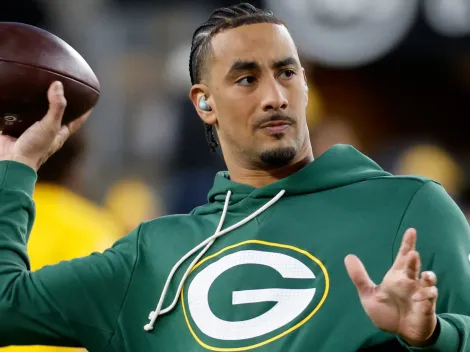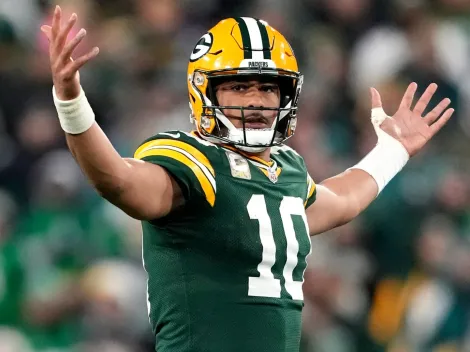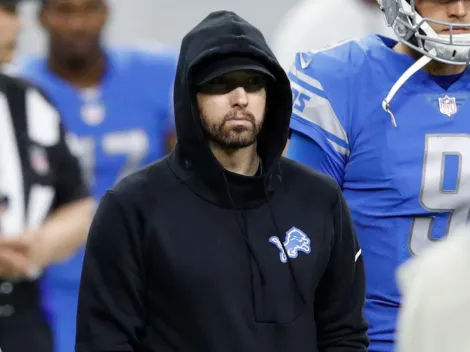In the NFL, jerseys are more than just fabric with numbers; they are time capsules carrying the essence of legends, eras, and unforgettable moments. Let’s celebrate these garments that redefined what it means to be a legend.
Some colors and designs become icons, transcending Sundays on the field to live in our conversations, memories, and even street fashion. Undoubtedly, they have become a fundamental part of the show.
Who doesn’t get excited reminiscing about the Buccaneers‘ “Creamsicles” or the Eagles’ Kelly green? These uniforms weren’t just worn by great players; they also set styles that made us want to wear them ourselves.
Dallas Cowboys (Silver and Blue)

Micah Parsons #11 of the Dallas Cowboys signs a jersey for a fan before the game against the Carolina Panthers at Bank of America Stadium on December 15, 2024. (Source: Grant Halverson/Getty Images)
The Dallas Cowboys jersey is an icon that transcends the field. Since their founding in 1960, the team adopted silver and blue as part of their identity, symbolizing sophistication and strength.
The blue star on the silver helmet represents Texan pride and remains a constant in their design. Over the years, uniform variations have been minimal, highlighted by metallic blue details adorning the jersey’s numbers and lines. This consistency reinforces the Cowboys’ status as “America’s Team”.
Green Bay Packers (Green and Gold)

Malik Heath #18 of the Green Bay Packers celebrates after scoring a touchdown against the New York Giants during the fourth quarter in the game at MetLife Stadium on December 11, 2023. (Source: Sarah Stier/Getty Images)
Founded in 1919, the Green Bay Packers boast one of the NFL’s most traditional jerseys. Their green and gold colors, adopted in the 1950s, reflect the region’s heritage and their “Titletown” nickname, earned through championship success.
The “G” logo, introduced in 1961 under legendary coach Vince Lombardi, is among the sport’s most recognized symbols. Its minimalist design mirrors the team’s humility and focus, while the colors exude energy and determination.
Pittsburgh Steelers (Black and Gold)

George Pickens #14 of the Pittsburgh Steelers celebrates after making a catch against the Carolina Panthers during the second quarter of the game at Bank of America Stadium on December 18, 2022. (Source: Eakin Howard/Getty Images)
The Steelers‘ black and gold uniform honors Pittsburgh’s industrial legacy as “Steel City”. Introduced in 1933, its design evolved to feature a unique logo displayed only on the right side of the helmet—originally an experiment in 1962 that became a signature feature.
The gold represents prosperity, while black symbolizes strength and resilience. This uniform is a testament to the team’s golden era in the 1970s when they won four Super Bowls in six years.
Las Vegas Raiders (Silver and Black)

Aidan O’Connell #12 of the Las Vegas Raiders passes the ball during the second quarter against the New Orleans Saints at Caesars Superdome on December 29, 2024. (Source: Sean Gardner/Getty Images)
Since their founding in 1960, the Raiders have embodied rebellion and toughness. Their black and silver colors reflect this philosophy, remaining largely unchanged throughout their history.
The design’s simplicity, paired with the pirate logo, became an intimidating NFL symbol. The uniform epitomizes the team’s defiant spirit on and off the field and has even influenced fashion and pop culture.
San Francisco 49ers (Red and Gold)

Brock Purdy #13 of the San Francisco 49ers looks to pass the ball against the Detroit Lions during the second quarter at Levi’s Stadium on December 30, 2024. (Source: Thearon W. Henderson/Getty Images)
Inspired by California’s Gold Rush, the 49ers adopted red and gold in 1946, symbolizing wealth and passion. The uniform has undergone subtle changes while retaining its classic essence.
The 1980s and 1990s, featuring legends like Joe Montana and Steve Young, solidified the uniform’s identity as a symbol of success during the team’s dominance and multiple Super Bowl victories.
Chicago Bears (Navy and Orange)
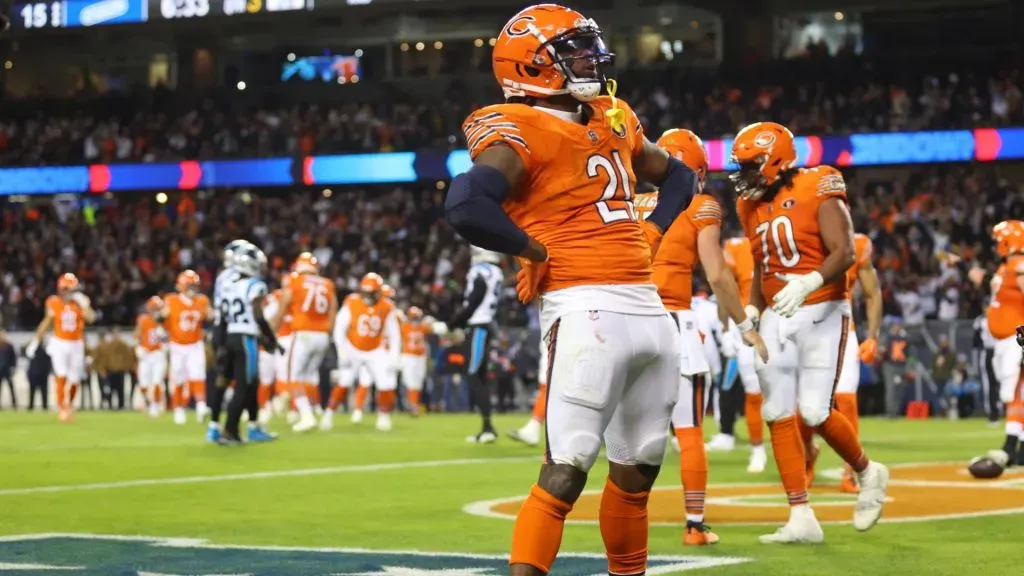
D’Onta Foreman #21 of the Chicago Bears celebrates after a touchdown during the third quarter against the Carolina Panthers at Soldier Field on November 09, 2023. (Source: Michael Reaves/Getty Images)
One of the NFL’s oldest teams, founded in 1920, the Bears‘ uniform reflects tradition. Navy and orange, adopted in honor of the University of Illinois, have remained largely unchanged. The classic “C” logo on the helmet, introduced in 1962, symbolizes the team’s deep football roots and connection to their home state.
Miami Dolphins (Aqua and Orange)

Tyler Huntley #18 of the Miami Dolphins celebrates a touchdown with Raheem Mostert #31 during the third quarter against the Cleveland Browns at Huntington Bank Field on December 29, 2024. (Source: Nick Cammett/Getty Images)
Introduced in 1966, the Dolphins‘ vibrant aqua and orange colors are inspired by Miami’s tropical hues. The logo, depicting a dolphin jumping over the sun, captures the city’s spirit and climate. The uniform is particularly iconic for the undefeated 1972 season, making it a symbol of sporting excellence.
New England Patriots (Retro Red)

Drake Maye #10 of the New England Patriots reacts after a touchdown in the fourth quarter of a game against the Indianapolis Colts at Gillette Stadium on December 01, 2024. (Source: Winslow Townson/Getty Images)
The Patriots‘ retro uniform, known as “Pat Patriot”, debuted in the 1960s and remained the primary design until 1993. This deep red jersey, paired with white pants, evokes the team’s early days before becoming NFL contenders. While the current design is more modern, this uniform remains a nostalgic favorite among fans.
Minnesota Vikings (Purple and Gold)
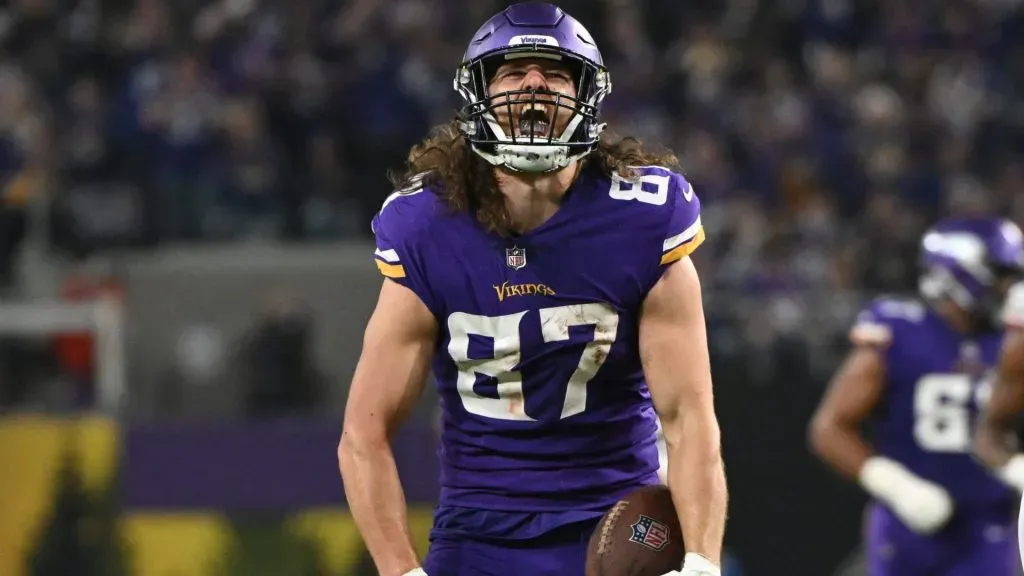
T.J. Hockenson #87 of the Minnesota Vikings reacts after a reception during the second quarter against the New York Giants in the NFC Wild Card playoff game at U.S. Bank Stadium on January 15, 2023. (Source: Stephen Maturen/Getty Images)
Debuting in 1961, the Vikings are known for their distinctive purple and gold, inspired by Nordic explorers. The horn-adorned helmet is one of the NFL’s most iconic designs. Minimal changes over the decades reflect the team’s cultural identity and fighting spirit.
Denver Broncos (Orange Crush)
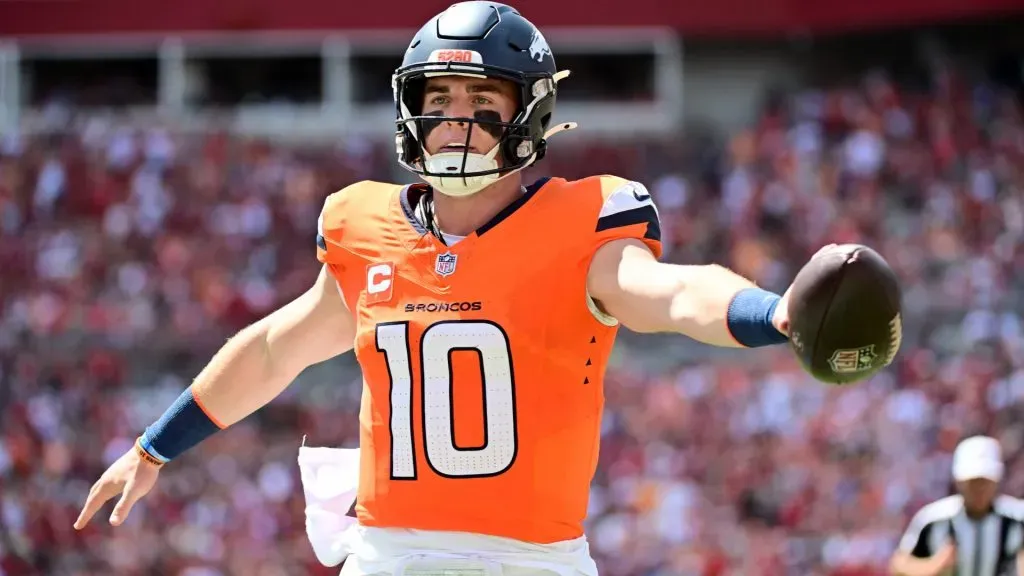
Quarterback Bo Nix #10 of the Denver Broncos rushes the ball for a touchdown against the Tampa Bay Buccaneers during the first quarter of the game at Raymond James Stadium on September 22, 2024. (Source: Julio Aguilar/Getty Images)
The Broncos‘ “Orange Crush” uniform, introduced in the 1970s, became a symbol of the team’s identity and golden era. The vibrant orange, paired with the retro “D” logo, exuded unmatched energy. This uniform is fondly remembered for the 1977 season’s fierce defense and remains a nostalgic favorite.
New York Jets (Kelly Green)

Aaron Rodgers #8 of the New York Jets warms up prior to a game against the Tennessee Titans at Nissan Stadium on September 15, 2024. (Source: Justin Ford/Getty Images)
The Jets‘ Kelly Green is a simple yet iconic color in the NFL. Debuting in the 1960s, it peaked in 1969 when the Jets, led by Joe Namath, won Super Bowl III in a historic upset. The clean design reflects the team’s fighting spirit, with Kelly Green symbolizing their greatest years.
Tampa Bay Buccaneers (Creamsicle)

Tom Brady #12 of the Tampa Bay Buccaneers warms up prior to a game against the Dallas Cowboys in the NFC Wild Card playoff game at Raymond James Stadium on January 16, 2023. (Source: Mike Ehrmann/Getty Images)
The Buccaneers’ “Creamsicle” uniform, introduced in 1976, celebrates the team’s early NFL days. Its distinctive soft orange tone and the “Bucco Bruce” logo marked a unique era. Despite initial struggles, the uniform earned fan affection for its bold aesthetics. Today, it is a nostalgic nod to the team’s roots.
Washington Commanders (Burgundy and Gold)
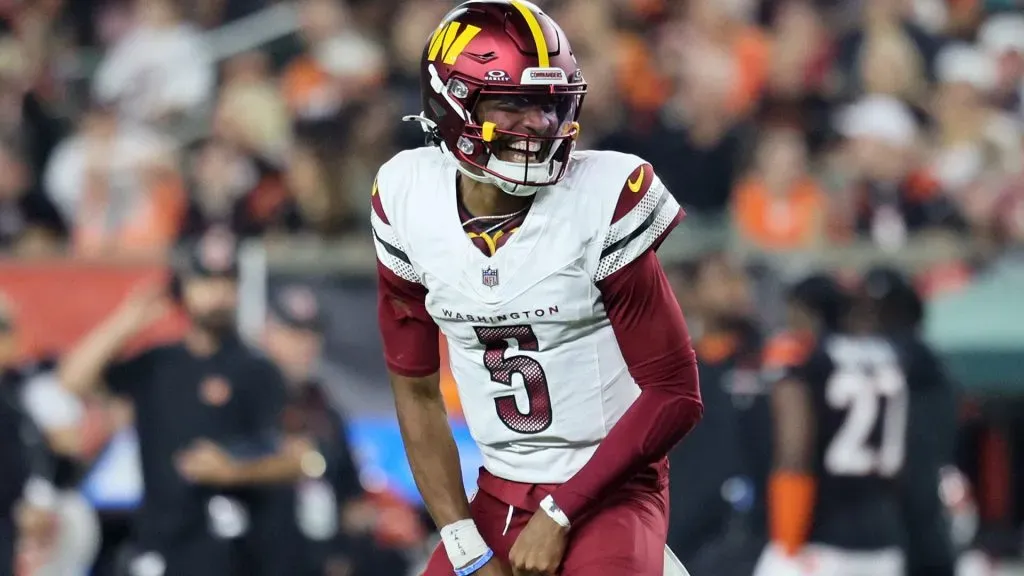
Jayden Daniels #5 of the Washington Commanders celebrates a touchdown scored by Trent Scott #73 against the Cincinnati Bengals during the third quarter at Paycor Stadium on September 23, 2024. (Source: Andy Lyons/Getty Images)
The Washington Commanders‘ burgundy and gold colors, adopted in the 1930s, symbolize tradition and success in the NFL. This design was prominent during the 1980s and early 1990s, when the team won three Super Bowls under coaches like Joe Gibbs. Despite recent rebranding, these colors remain a testament to the team’s rich history.



